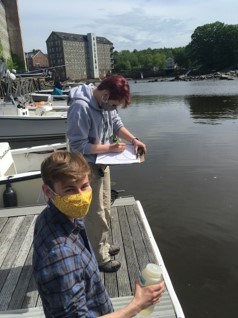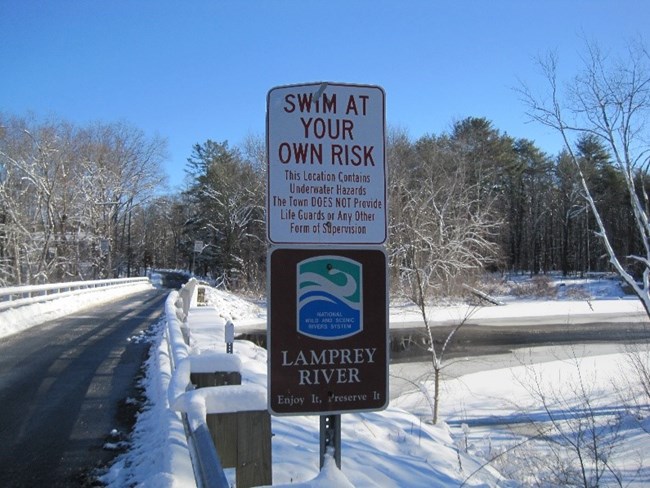Last updated: January 21, 2022
Article
Quantifying Water Quality on the Lamprey River
Content submitted by: Suzanne Petersen, Lamprey River Advisory Committee

S. Jones
The Lamprey River is fortunate to have easy access to a number of resources to study water quality in the river and its tributaries. For more than 30 years, volunteers have taken the initiative to be trained through the NH Volunteer River Assessment Program and have diligently submitted their summer data to the state. The river is also in the backyard of the University of New Hampshire (UNH), where researchers and students have probed deeper into the details. Each year, UNH hosts a Lamprey River Research Symposium where researchers can share their findings with colleagues, legislators, town officials, and the general public.
While the Lamprey River Advisory Committee (LRAC) does not engage directly in water quality testing, Wild and Scenic River funding provides equipment and coordination for volunteers to continue their important work throughout the watershed regardless of support from the state. Funding has been used to create easy-to-understand fact sheets that explain and summarize water quality trends on the river. It has also helped UNH researchers accomplish some important work that might otherwise not happen.
This year’s funding to UNH researchers enabled the purchase of new and updated monitoring sensors that measure several key indicators of environmental health, including nitrates, every fifteen minutes year-round at Wiswall Falls in Durham. This level of detail shows when nitrogen levels peak and wane during storms and throughout the year. This information is critical for informing management of the river, but also for the Great Bay Estuary downstream. As part of the grant that the LRAC awarded to UNH, these data will soon be streamed to a public website so that anyone can track nitrogen trends as the data come in.

S. Petersen
The LRAC also funded some much-needed bacterial tracking research this past summer. There have been indications that bacterial counts are high at times at certain locations, but the data were not sufficiently detailed to be helpful. The results that have come back indicate that, overall, the river is generally clean enough for human contact. Various sources of fecal bacteria were detected, from human, cow, goose, dog, and general mammal species, but except for one site, at concentrations below levels that pose a risk to humans. At one downtown site, human fecal bacteria were detected at levels that far exceeded state limits. The contamination at this site appears to be a public infrastructure problem; local and state authorities have been notified.
On a river where there are no public beaches, and therefore, no regular state testing, and most residents have septic systems, this level of detail is critical for human safety and local land-use regulation. This information would not have come to light were it not for the LRAC’s desire to answer a most basic question that we often are asked: Is the river’s water safe for fishing and swimming?
The results of water quality monitoring are not always what we hope, but even bad news is beetter than significant gaps in our understanding. We cannot hope to effect change if there are no data to indicate that a change might be needed. Knowledge, is indeed, empowering.
